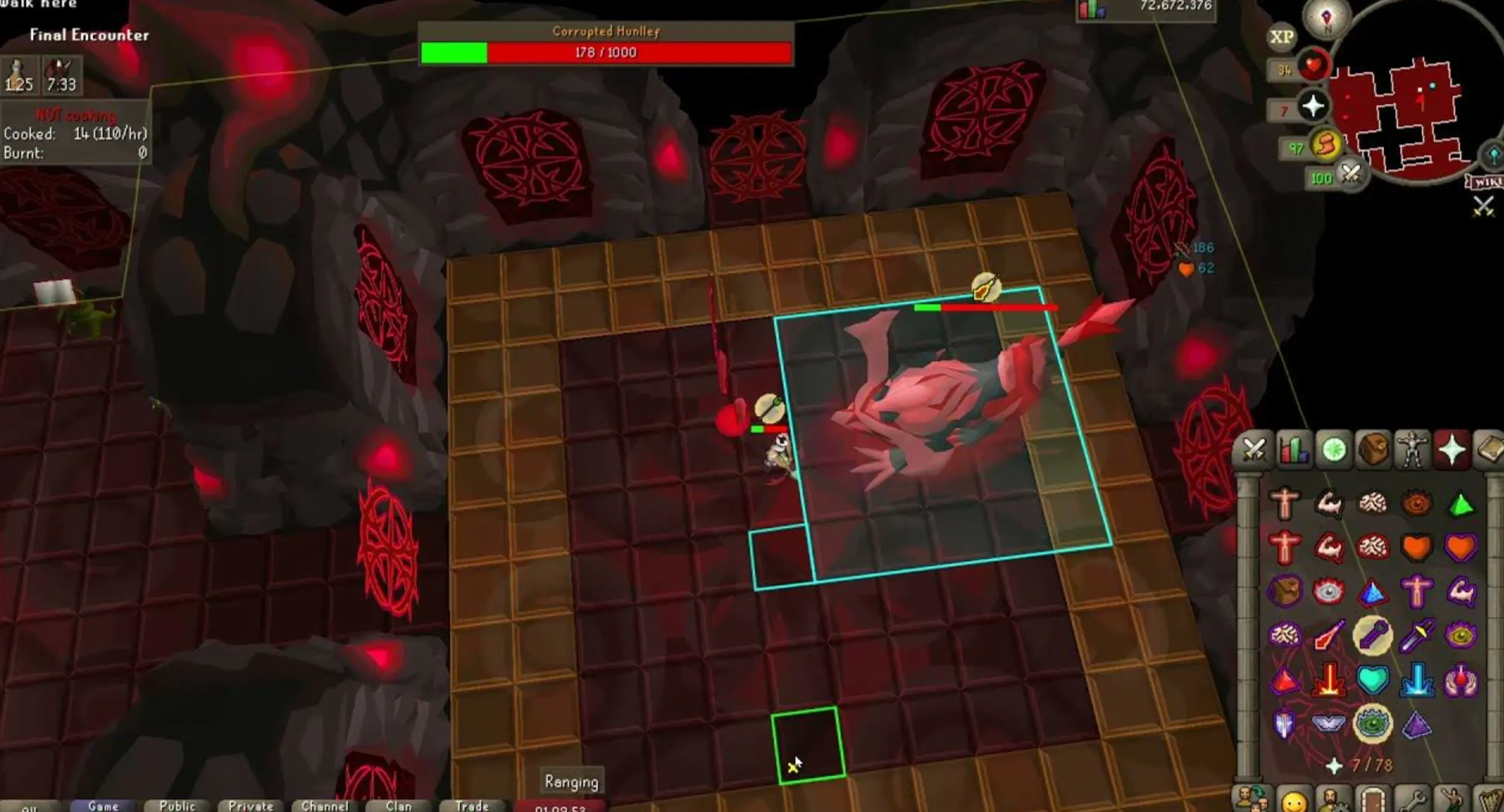Your cart is empty
Transfer RuneLite Data OSRS New Computer Guide

Ever fired up Old School RuneScape on a shiny new rig, only to stare at a blank RuneLite interface like you’ve never played before? Yeah, that gut punch when your custom plugins, tile markers, and loot trackers vanish into the ether. I’ve been there, grinding OSRS since the early days of 2007, and let me tell you, nothing kills the vibe faster than rebuilding your setup from scratch. As a guy who’s maxed multiple accounts and spent way too many hours tweaking overlays for boss fights, I know the pain of a botched transfer. But here’s the good news: it doesn’t have to be that way. Today, we’re diving deep into why your RuneLite might not be playing nice with that new computer and how to fix it, step by step. Stick around, because by the end, you’ll be back to slaying Vorkath with all your bells and whistles intact.
Picture this: You’re upgrading from that dusty laptop that’s seen better days to a beast of a desktop. Excitement builds as you install RuneLite, log in, and… crickets. No custom ground item highlights, no boss timers, nada. Why does this happen? Simple. RuneLite stores most of your goodies locally on your old machine, not floating in some mystical cloud for every device to grab.
From my experience, back in 2022 when I swapped from a clunky work PC to my first gaming laptop, I lost weeks of fine-tuning. I had ground markers everywhere for theater of blood runs, and poof, gone. Turns out, without a RuneLite account or manual backup, it’s all tied to that .runelite folder buried in your user directory. Cloud sync helps with profiles, but screenshots and third-party plugin tweaks? Those stay local unless you move them yourself. It’s not a bug; it’s just how the client rolls to keep things lightweight.
Have you ever wondered if Jagex had a hand in this? Nah, RuneLite’s open-source, so it’s all on the devs to balance convenience with security. But don’t sweat it. Understanding the split between synced and local data is your first line of defense.
The Big Divide: Synced vs. Local Files
Let’s break it down quick. Synced stuff, like plugin configs and kill counts, ties to your RuneLite profile if you’re logged in. Local bits, such as screenshots or custom notes, chill in folders you gotta wrangle manually.
I remember cursing under my breath during a late-night session after my transfer flop. My loot tracker was there, mocking me with fresh zeros, while my GE price logs were AWOL. Turns out, loot data syncs via your OSRS account, but everything else needed elbow grease. Quick question: Did you check if you’re even signed into RuneLite on the old setup? If not, that’s your culprit right there.
Step-by-Step Guide to Transferring Your RuneLite Setup

Alright, enough chit-chat. Let’s get hands-on. I’ll walk you through the two main paths: the easy cloud way if you’ve got a profile, and the manual drag-and-drop for the rest. I’ve done this transfer three times now, most recently last year when my desktop fried during a power surge mid-raids. Took me under an hour once I knew the drill.
Method 1: Using RuneLite Profiles for Seamless Sync
If you’re already rocking a RuneLite account, this is your golden ticket. Profiles let you bundle plugins, layouts, and settings into switchable packs. Bonus: They sync across devices like a dream.
First off, on your old computer:
- Fire up RuneLite and click that little account icon in the top-left corner. See the green door? Hit it and sign in with your Google creds if you haven’t.
- Head to the configuration panel, that wrench icon. Poke around to the Profiles tab. If you’ve got multiple setups, duplicate your main one just in case. Export it as a backup file right there, easy peasy.
Now, jump to the new machine:
- Install RuneLite fresh from the official site. Launch it, sign in with the same account.
- Back in the config panel, Profiles tab again. Your old setup should pop up under synced profiles. Select it, hit apply, and restart the client.
Boom. In my last switch, this pulled over my entire theater overlay, complete with custom alerts for phase changes. Felt like cheating the system. But wait, does it grab everything? Nope, not screenshots or external plugin data. For that, we layer on method two.
Quick tip from the trenches: If it doesn’t show up, force a sync by logging out and back in. Happened to me once after a Windows update glitched things.
Method 2: Manual Backup of the .runelite Folder
No account? Or need those pesky local files? Time to play file explorer detective. This method copies the whole shebang, ensuring nothing gets left behind.
Start on the old PC. Open File Explorer and paste this into the address bar: %userprofile%.runelite. Hit enter. Boom, you’re in the heart of it. This hidden folder holds your configs, profiles, screenshots, the works.
What to grab? Everything, really. But prioritize:
- profiles or profiles2 folder: Your plugin setups.
- screenshots folder: All those epic drop pics.
- cache folder: Helps with quick loads, though it’s not essential.
Zip the whole .runelite folder or copy it to a USB, external drive, or cloud storage like OneDrive. I always use Google Drive for this; it’s free and syncs fast.
Over on the new computer:
- Install RuneLite, but don’t launch yet.
- Navigate to the same spot: %userprofile%.runelite. If it exists (from a test run), rename it to .runelite_old as a safety net.
- Paste your backed-up .runelite folder here. Overwrite if prompted.
- Fire up the client. If you’re signed in, it might prompt to merge profiles. Say yes.
Last time I did this, during my 2024 upgrade, I forgot the screenshots at first. Spent 20 minutes hunting a Fire Cape drop pic for motivation. Lesson learned: Double-check the zip before ditching the old rig.
Ever had a transfer go sideways? Mine did once when I copied mid-game; client crashed and ate half the files. Always shut down RuneLite first.
Common Pitfalls and How to Dodge Them
Transfers aren’t always smooth sailing. I’ve hit snags that’d make a noob rage-quit, but as a vet with 2k+ hours in raids, I’ve got the fixes.
Pitfall 1: Profiles Not Appearing After Sync
This one’s a classic. You log in, and it’s like starting over. Why? New installs default to a blank profile.
Fix: In the config wrench, Profiles tab, look for “Import from cloud” or just select your synced one from the dropdown. Restart. If still nada, check your internet; sync needs it.
From a Reddit thread I lurked last month, tons of folks miss this step. I did too, back when profiles first dropped in update 1.9.11. Pro tip: Set your main profile as default right away.
Pitfall 2: Third-Party Plugins Acting Up
Love those external plugins from the hub? They might not transfer cleanly, as their data lives outside the main sync.
Solution: Reinstall from the Plugin Hub after transfer, then reconfigure. For backups, some plugins have export buttons; check their docs.
I run a custom one for clue scroll helpers. After one move, it reset my hotspots. Quick export JSON from old, import on new saved the day.
Pitfall 3: Loot Tracker or GE Logs Missing
Loot tracker’s tied to your OSRS account, so it should sync fine. But if not?
Log into runelite.net with your RuneLite creds. View your data there, then refresh in-client. GE logs? They’re local unless you export to JSON via the website.
Short answer: Always export before migrating. Long story: I lost a month’s worth of Veng prices once. Hurt more than a dry streak.
Quick Comparison: Cloud Sync vs. Manual Copy
Not sure which method to pick? Here’s a table to make it crystal clear. Based on my switches, this breaks down the pros and cons.
| Feature | Cloud Sync (Profiles) | Manual .runelite Copy |
|---|---|---|
| Ease of Use | Super simple if set up; just log in. | A bit fiddly with file hunting, but foolproof. |
| What Transfers | Plugins, configs, kill counts. | Everything: Screenshots, notes, full cache. |
| Time Needed | 5-10 minutes. | 15-30 minutes, plus transfer time. |
| Requirements | RuneLite account and internet. | External drive or cloud storage. |
| Best For | Frequent multi-device players. | One-time upgrades or no-account users. |
| My Rating (Out of 10) | 9 – Hands-off magic. | 8 – Total control, zero surprises. |
See? No wrong choice, just depends on your setup. I lean manual for big moves; peace of mind is king.
Personal Tales from the Transfer Trenches
Let me pull back the curtain a sec. I’m no stranger to OSRS heartbreak. That 2022 laptop swap? I was deep into inferno prep, with tile markers for every jad phase. Transfer failed because I skipped the profile export. Ended up spending a Friday night rebuilding, chugging energy drinks while cursing Jagex’s launcher as a backup plan. Spoiler: Official client’s no RuneLite, but it got me through.
Fast forward to last year. New desktop, RGB lights and all. This time, I nailed it. Copied the folder via USB, signed in, and watched my 500+ hour loot tracker load like an old friend. Felt invincible logging into a world for quick herb runs, ground items glowing just right. But here’s a funny bit: My custom menu entries for “eat shark” hotkeys carried over, but one glitched to “teleport home” mid-fight. Nearly wiped on a lesser demon. Laugh or cry? I laughed, then fixed it.
What’s your worst transfer horror story? Drop it in the comments; we can commiserate.
And yeah, sometimes I capitalize WHOLE WORDS for emphasis, like when I’m hyped about a perfect transfer. Makes the win feel bigger, you know?
Pro Tips for a Bulletproof OSRS Setup on Any Machine
Once you’re transferred, don’t stop there. Lock it down for future-proofing.
- Regular Backups: Set a monthly ritual. Zip that .runelite folder and toss it on Drive. Takes two minutes.
- Profile Switching: Use multiple for alts. I have one for PvM, another for skilling. Switch via the wrench, no hassle.
- Test Run: After transfer, hop into a low-stakes world. Check overlays on goblins. Better safe than sorry.
- Update Often: RuneLite patches fix sync bugs. I update weekly; keeps things smooth.
Oh, and a list of must-have plugins post-transfer? Here’s my go-tos:
- Ground Markers: For boss arenas. Life-saver.
- Boss Timers: Never miss a burn phase again.
- Inventory Tags: Organize that bank like a pro.
- Loot Tracker: Duh, but export it monthly.
- Menu Entry Swapper: Custom clicks for days.
These carried me through a 50-hour raid week last month. No transfer drama, just pure gains.
Wrapping It Up: Get Back to Grinding
There you have it, fellow scrimmers. Transferring RuneLite data to a new computer isn’t rocket science, but skipping steps turns it into a nightmare. Whether you sync via profiles or haul files manually, the key is preparation. I’ve lost count of the hours I’ve sunk into OSRS tweaks, and I bet you have too. Don’t let a hardware upgrade steal that progress.
So, what’s next? Fire up that new setup, queue for some ToB, and feel the rush of familiarity. If this guide saved you a headache, share it with a clanmate in the same boat. Questions? Hit the comments. Now go make those drops happen.

